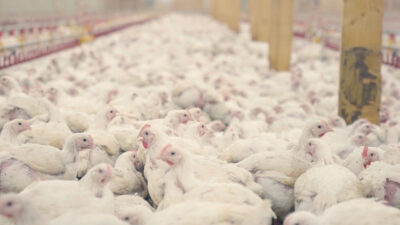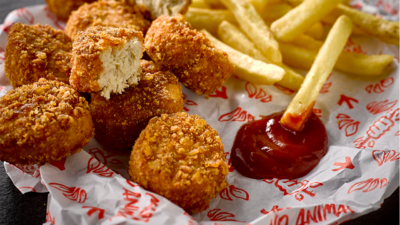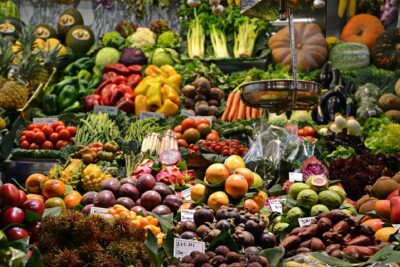If we think of chickens at all, we may think of happy birds strutting around a farmyard, laying a couple of eggs a day for a cheery farmer’s family to enjoy. But this is not the reality for the billions of chickens in farms in the UK and around the world who are reared to produce the meat and eggs that end up on our supermarket shelves. Instead, these poor animals endure short lives that are filled with deprivation, fear, and suffering.
HOW LONG DO CHICKENS LIVE IN CAPTIVITY?
The lifespan of the average captive chicken depends largely on why that chicken was bred and hatched, as different types of bird are farmed for their meat and eggs.
The more than a billion chickens raised for meat each year in the UK have been engineered to reach slaughter weight in just 35 days. Once they have reached 2.2kg, even though they are still babies, the birds are packed into crates and transported to slaughter, after which their bodies will be butchered and processed into food products, such as nuggets and wings.
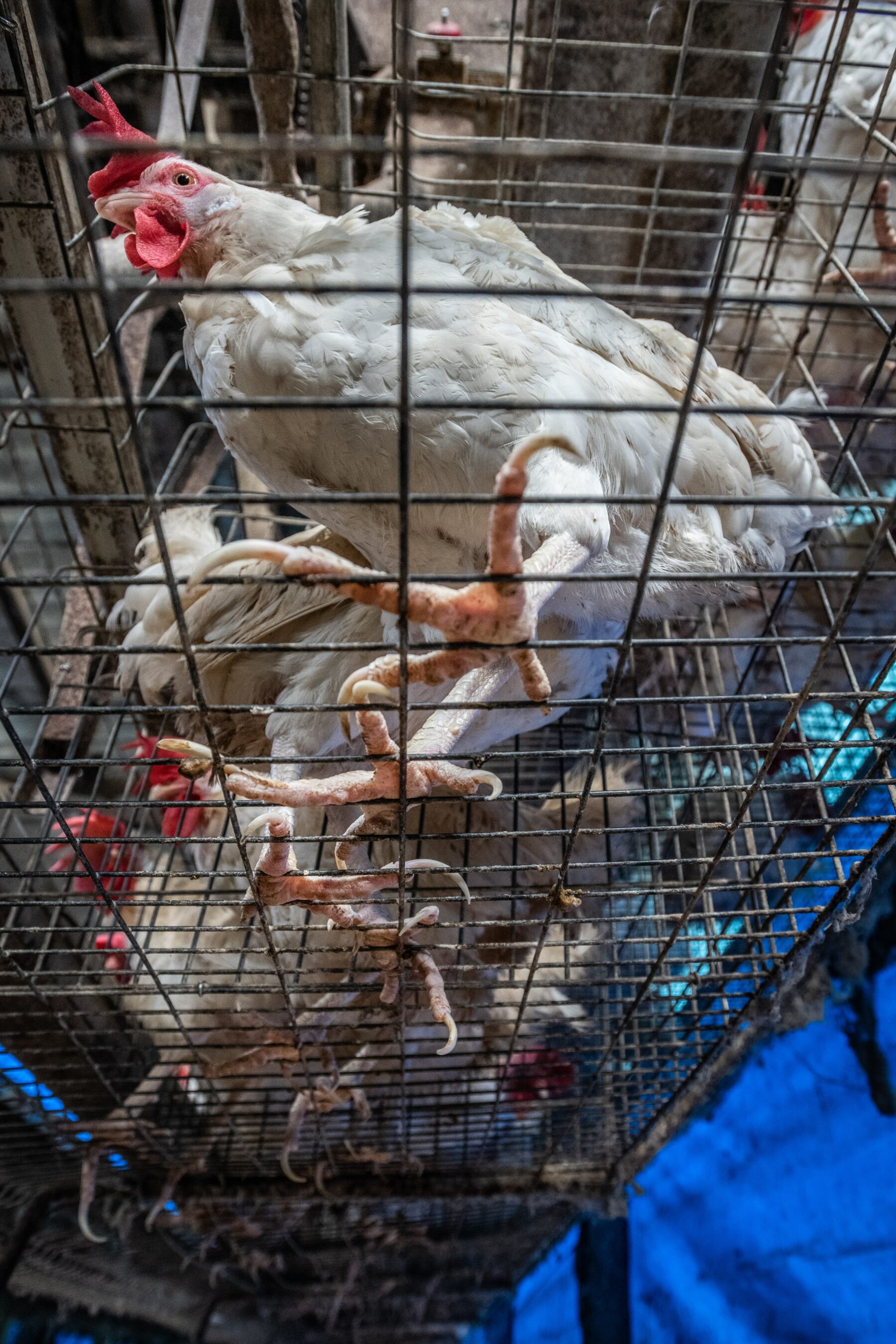
There are 38 million egg-laying hens in the UK alone, and around half of them are still caged. They begin laying eggs at about 19 weeks of age and lay an average of 300 eggs a year. This is far more than their bodies can safely manage as each egg requires a lot of calcium for the shell. This important mineral is taken from the birds’ bones, leaving them weak and susceptible to fractures and breaks. Not surprisingly, the birds cannot endure such treatment for long. After about 18 months, their bodies begin to break down, and they are considered ‘spent’. If they were released from this punishing regime, they could recover and live another ten years but instead the birds are sent to slaughterhouses. Their bodies may end up in landfill or be used for low-grade meat products.
HOW LONG DO CHICKENS LIVE IN THE WILD?
The bird we call ‘chicken’ is not a natural breed but has been selectively bred by farmers to yield the largest amount of meat and the largest number of eggs in the shortest possible time. The closest known wild relative of these farmed chickens is the red jungle fowl, a breed which is indigenous to parts of India and south-east Asia. There are still many similarities between domesticated chickens and red jungle fowl, however, and the natural lifespan of a red jungle fowl is roughly 10 years.
HOW LONG DO BACKYARD CHICKENS LIVE?
Backyard chickens are usually kept for their eggs, which means they are a breed that can live for ten years or longer. However, their lifespan largely depends on the competence and commitment of the person who cares for them. If the birds are fed a nutritious diet, are protected from predators, have their health cared for by a veterinarian, and are not manipulated to produce more eggs than their body can support, then they could live for 10 years or more.
HOW LONG DO CHICKENS LIVE AS “PETS”?
Chickens are highly empathetic creatures who, while being independent, can live quite happily around people. They even purr when they are content. When cared for properly, and given both the freedom to roam and protection from predators, they can live an extraordinarily long time. There have been several instances of chickens living to 20 or more when given proper care and a loving home.
HOW LONG DO HYBRID CHICKENS LIVE?
Most chickens alive today are the result of intensive selective breeding, which is carried out with the exclusive aim of creating the most profitable physical traits in them. This has led to pure-bred strains of birds. Sometimes, different strains are interbred, making hybrid chickens. Often, these are hardier and healthier than pure-bred birds, just as mixed-breed dogs tend to be healthier than pure-breeds. But again, how long they live depends on where and how they are kept, and whether the person who cares for them has their best interests at heart.
HERITAGE VERSUS HYBRID HENS
There are heritage breeds of almost every animal kept on farms today. These breeds are those that were bred by farmers before the mass industrialisation of farming began. Often, these are slower-growing breeds as it is only in the past 70 years or so that we have demanded birds grow so big and so fast, or lay so many eggs. This means, heritage breeds may also be healthier and live longer than the modern breeds, as their bodies are not forced to perform past their biological limits.
WHAT DO CHICKENS USUALLY DIE FROM?
The most common cause of death for chickens is humans, as we raise them by the billions inside industrial farms and kill them for food. Every year in the UK over one billion chickens are killed for human consumption. Millions more day-old male chicks are killed by the egg industry as they are the wrong sex to lay eggs and the wrong breed to put on weight for meat. These poor birds are gassed to death on their first day of life.
Many chickens also fall victim to illness, disease, and injury due to their forced swift growth on intensive farms. They are likely to suffer heart conditions, lameness, and sores and infection on their feet, all of which increase the likelihood that they will die, or be killed, before being shipped to slaughter. The cost of a veterinarian is more than each bird is worth, so millions of birds suffer to death right there in the sheds. Those who are deemed too small to be profitable will also be killed, often by having their necks twisted.
WHAT FACTORS AFFECT A CHICKEN’S LIFESPAN?
There are a number of factors that influence how long a chicken will live. Among them are breed, care, genetics, housing, nutrition, and predation. Some of these factors can be controlled to help improve the chances of each bird living a long and healthy life, while others are more difficult to predict and plan for.
BREED
The breed of a chicken is one of the primary factors in how long a chicken will live. If a chicken is one of the fast-growing breeds used for meat production they are much more likely to die earlier. Even if they are not slaughtered, their genetic susceptibility to heart failure and lameness means they are unlikely to live long.
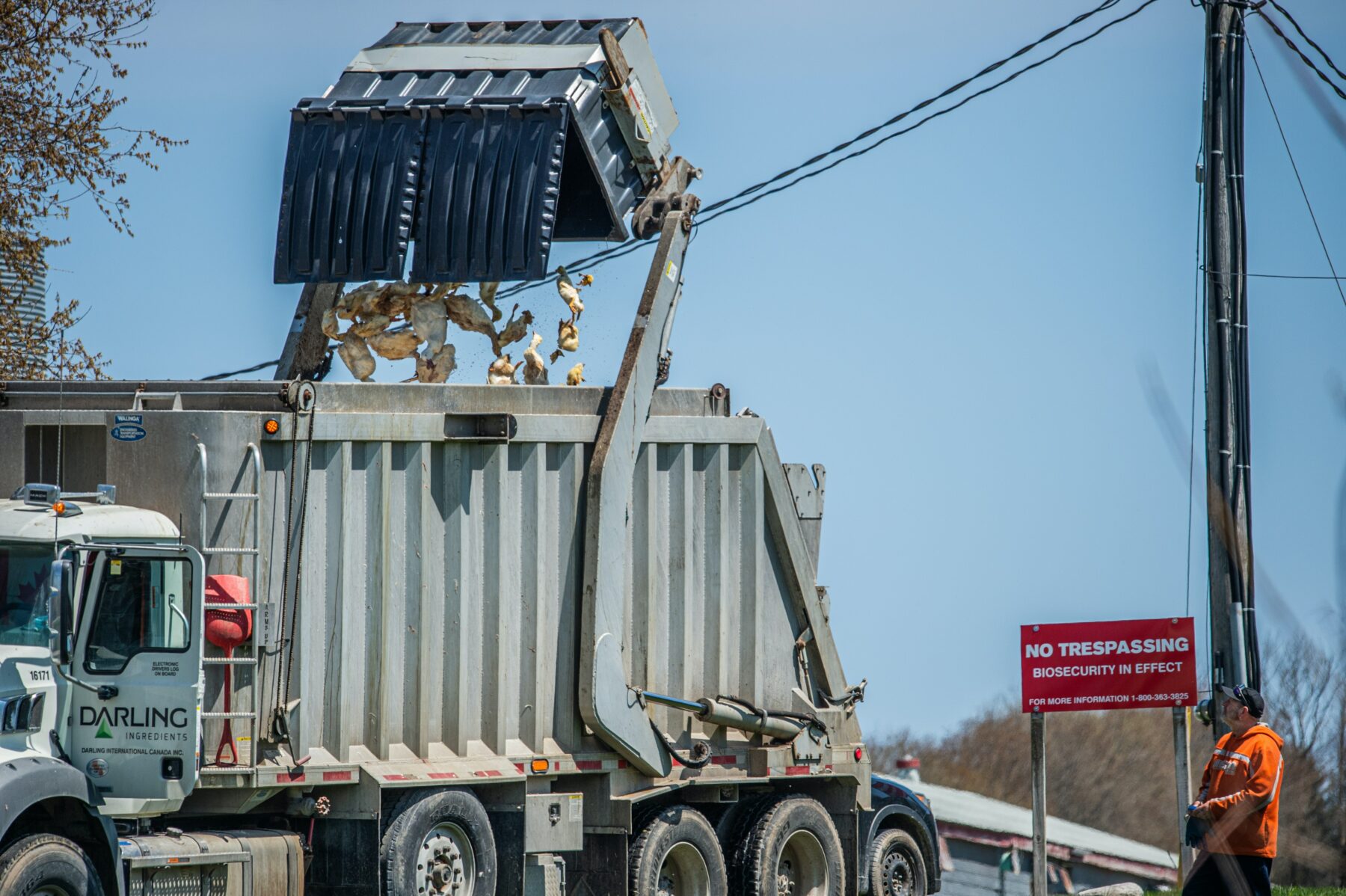
DISEASE
Factory farms are disease factories. Inside them, immunocompromised animals are crammed together in squalid conditions. When viruses like bird flu begin to circulate, they can have a devastating effect on birds, and on people, too. This highly contagious disease is prevalent across the UK, and some viral strains have spread to people and killed them. Because of this, infected flocks are frequently slaughtered en masse, often in utterly inhumane ways.
ENVIRONMENT
The environment in which chickens live contributes to their lifespan. Chickens kept crammed inside cages, fed on artificial food, with the lights kept on almost permanently to trick the birds into laying more eggs, will not live as long as a bird in a loving home. In the right environment, birds can strengthen their bones, hearts and immune systems by roaming, roosting, and scratching in the earth.
SEX
Sex can be a determining factor when it comes to whether or not a chicken survives. This is especially significant when it comes to those birds farmed for their eggs on industrial farms. Because male chicks are not able to lay eggs and do not grow quickly enough to be profitable for their meat, males hatched into this industry are killed on their first day of life, usually in the UK by being gassed.
GENETICS
Modern chickens have been bred intensively to increase their profitability with little regard for how this affects their health and wellbeing. For example, the parents of chickens raised for meat are genetically predisposed to overeating. They have been bred this way because the more they eat, the faster they grow and the more money can be made from their bodies. Even if their chicks are rescued and live happily in a loving home, this genetic factor will still exist. They will always feel hungry.
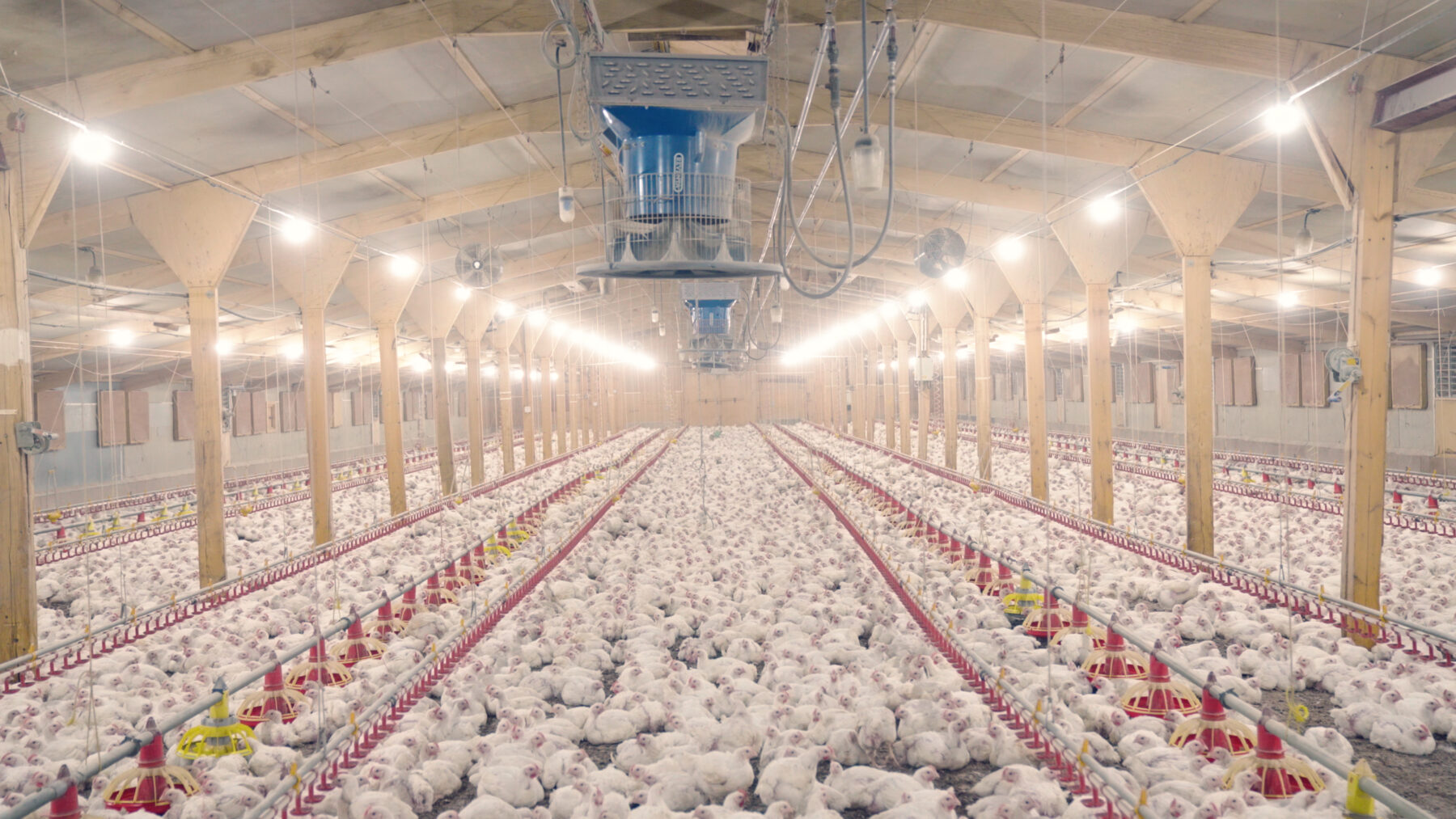
HOUSING
A major determining factor in life expectancy is housing. Battery cages, the most restrictive form of housing for chickens, have been banned in the EU and the UK since 2012, but they were simply replaced with larger “enriched” cages. In them, the birds still suffer foot lesions, experience stress and frustration, and are denied the ability to roam, to feel the sun on their backs, or to dust bathe – all things that make life worthwhile and keep birds healthy.
PREDATION
Because modern breeds of chickens are only able to fly short distances, they are commonly killed by predators, often foxes, who are looking for a meal for themselves and their young. It is essential that anyone who cares for chickens provides a secure, dig-proof enclosure and that they are kept safe, particularly at night. Balancing their freedom with their protection is not always easy.
SLAUGHTER
The leading factor impacting a chicken’s lifespan is slaughter, and most chickens are killed when they are just a few weeks old. They still tweet like chicks and have a chick’s blue eyes.
VETERINARY CARE
Providing adequate veterinary care is key to increasing the life expectancy of a chicken. This care is not afforded birds inside the modern farming system, but those in sanctuaries or cared for outside of farms must be provided proper veterinary care when needed.
HOW LONG DO CHICKENS LIVE BEFORE SLAUGHTER?
The lifespan of a chicken prior to slaughter depends on whether the chicken is a hen being farmed for her eggs or a chicken being raised for his or her meat. Egg-laying hens are sent to slaughter at around 18 months. At that point, their bodies are starting to break down and egg production inevitably declines. In this ruthless industry, it is cheaper for farmers to kill them and bring in new, younger birds. Chickens raised for meat are sent to slaughter at about 35 days old when they have reached a profitable weight of about 2.2kg.
WHO WAS THE OLDEST CHICKEN IN THE WORLD?
There is some debate surrounding which chicken can lay claim to the title of the world’s oldest bird. One contender is Muffy from Maryland in the US, who died in 2011 at the age of 22.
CONCLUSION
Chickens are smart, social, and sentient beings who have the capacity for joy, fun, friendship, fear, pain, and suffering. We are sure that if people really got to know these complex and interesting birds, they would see them for who they really are. We are also sure that if people saw the farms on which so many are kept, they would not support that industry a moment longer.
Our mission is to spare the lives of our feathered friends and introduce people to vegan chick*n as the kinder, more compassionate, and just as tasty alternative.

